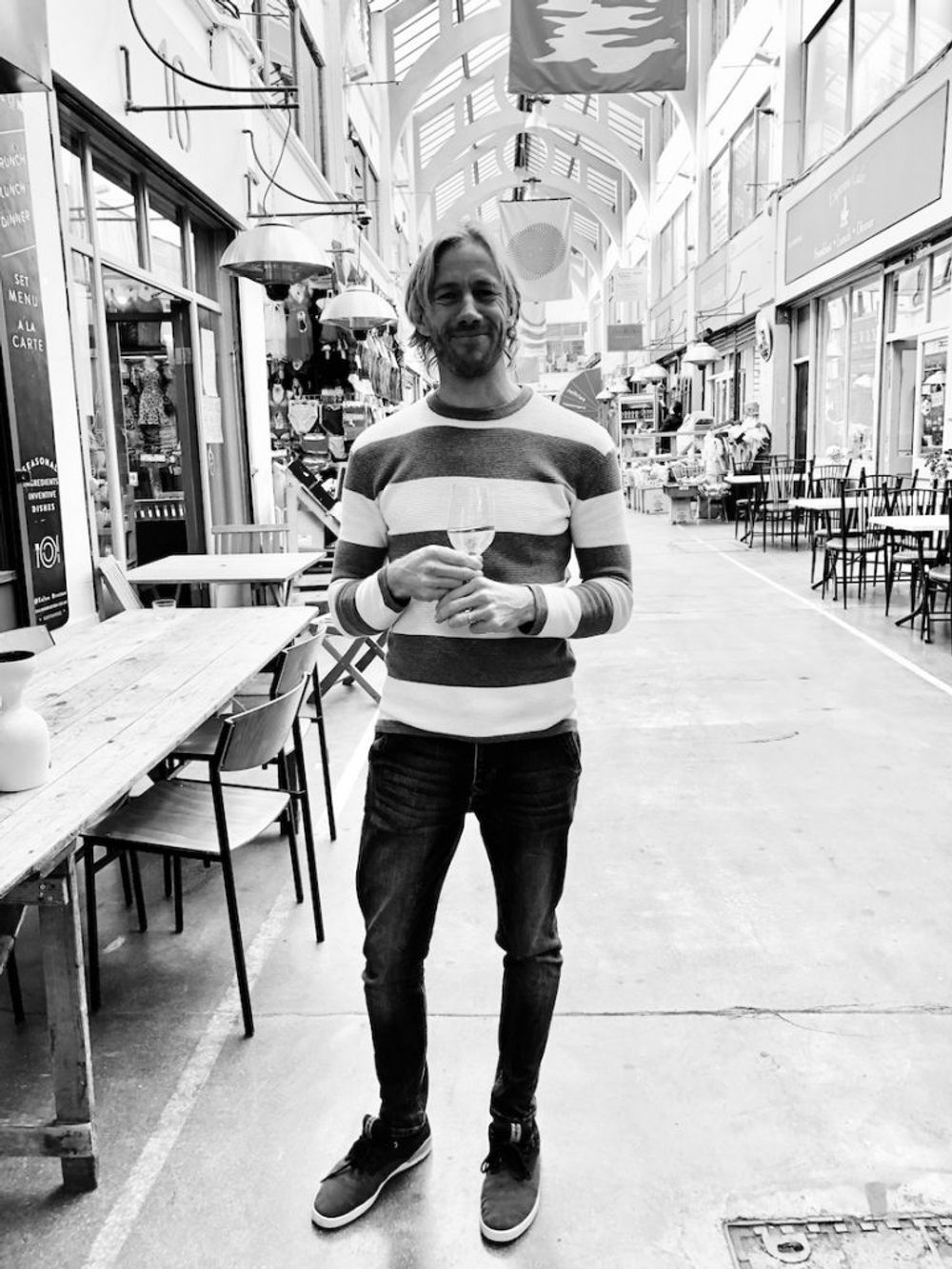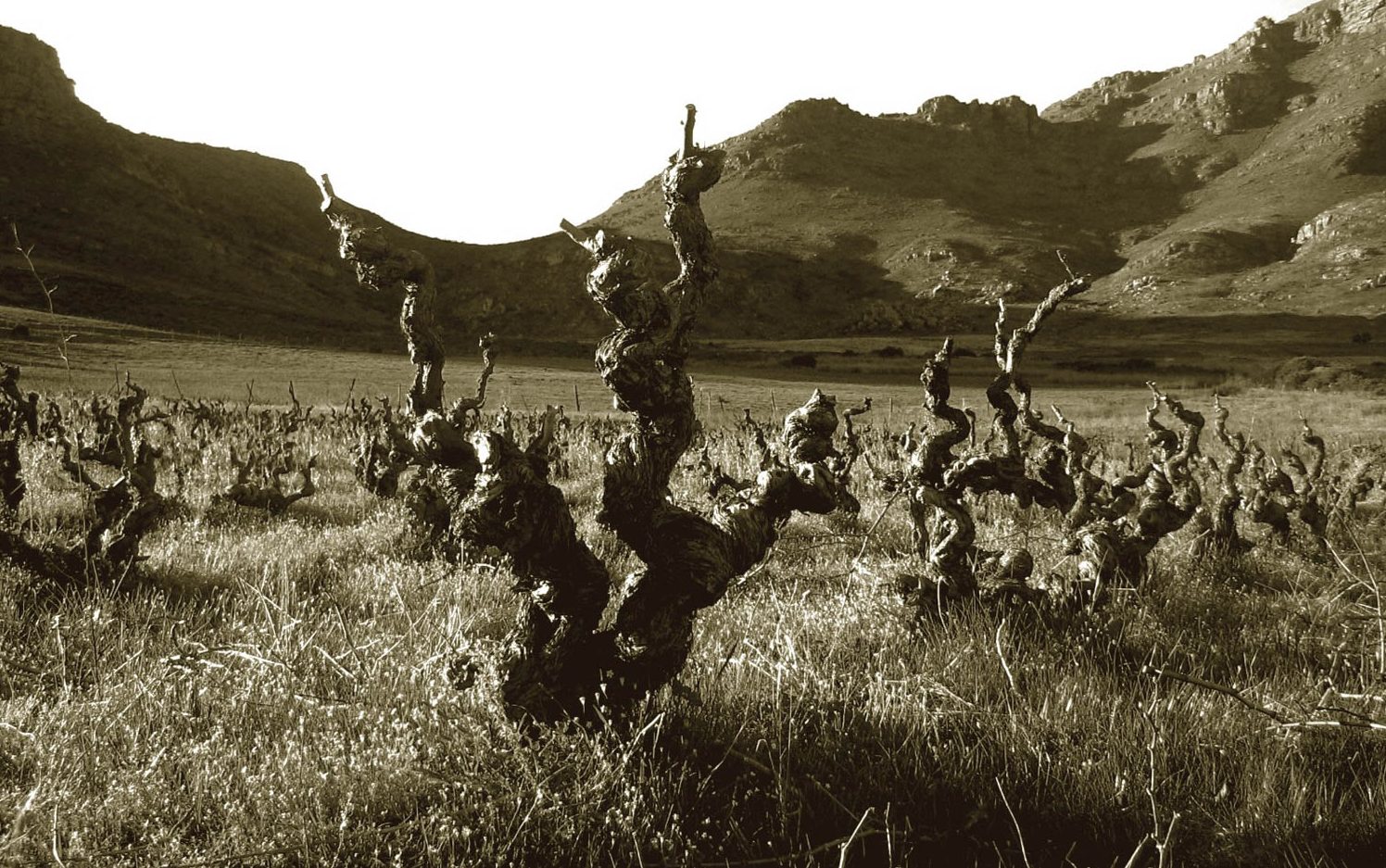BLANKbottle, Restless River, Keermont and AA Badenhorst are highlighted, as well as an insight into how the South African New Wave began.
October saw a group of the world’s most exciting winemakers and growers descend upon London. They all hail from South Africa, and were in town for the second New Wave South Africa tasting, organised by importers who represent and celebrate the winemakers and their wines. It was a brilliant and emotional tasting with an enormous amount of drive, talent, belief, soil and soul under one roof.
The next day, I headed to a tasting and lunch organised by SWiG, which has been representing some of South Africa’s finest talent for many years. Back at the beginnings, SWiG had a retail shop in Belsize Park, and had a South African joint director, Lou Doppelt. He also owned the company, SA Wine Centre, based in Wigmore Street.
It was old school – things like Nederburg and KWV as well as classics such as Meerlust. Damon Quinlan, of SWiG, mused “back then, there was the rustlings of people moving towards a newer style, Gyles Webb for example.” Eventually, the SA Wine Centre folded, and Doppelt retired. SWiG took over the database. This was 15 years ago, so they just had a big bunch of invoice books to scroll through manually. In the meantime, SWiG had sold its own books to Lea & Sandeman, which had taken over the retail space, and so as they were in a freeze period without much they were able to do, Robin Davis and Quinlan went to South Africa.
It was on this trip that they met some amazing people, who now grace the wine lists and the thoughts, palates and cellars of so many of us in London. Adi Badenhorst was making wine at Rustenberg, with assistants Chris Mullineux and Callie Louw. SWiG returned with some exciting wines, and sold 15 pallets in a week. From that point onwards, really exciting things had begun on the horizon. Eben Sadie was with Charles Back in the Swartland.
Quinlan recalls, “I remember seeing Eben’s first Palladius being made in his shed. Adi had begun experimenting with Rhône varietals. The quality had shifted really quickly, and the energy and enthusiasm was noticeable on every trip. We were totally engaged and thrilled with what was happening.”

Chris Mullineux, Callie Louw and Adi Badenhorst (l-r, three of the four original founders of the Swartland Revolution) with the team ‘back in the day’.
Friendships had become solidified and Adi and Duncan had become good friends of the company, and imports grew. Pieter Walser appeared, winning the Wine Stars competition at the London Wine Fair. Chris Mullineux recommended an up and coming winemaker who we know as Alex Starey, and so Keermont appeared on the scene. Roger Jones tasted Restless River on his travels and relayed his findings, and it became evident that something special was forming.
“The super cool thing about South Africa is that it’s really about camaraderie and friendship. You invite neighbours round and have a braai. Nothing is staged. This friendship just happens and it’s so natural. The relationships we have; have come about because of friendship. We bring that friendship here. You need to get these guys in one room to get that vibe; it doesn’t work at a big generic tasting.”
There is such energy in these wines. All too often, as wine critics and members of the wine trade, we forget about the hugely important emotional aspect of wine. Tasting notes are scribbled hastily, and points are published, sometimes like blunt little daggers.
For me, these are wines that greatly move me. They are wines that sometimes surpass the capacity for tasting notes, the kind of wines where notes do not convey the message, because the wines are greater than words. These wines are evocative wines: full of energy, denseness, purity and, most of all, such a sense of place that they are difficult to encapsulate on paper.

Pieter Walser, BLANKbottle, London, 2017
I remember vividly buying a bottle of The Moment of Silence 2014, around two years ago, from Philglas + Swiggot. I opened it, and promptly fell in love with the contents. The wine was bright, crystal clean and pure, expressive, pretty, creamy, beautiful, unsettling and comforting all in one go. It was deeply moving, with certain energy, softness and soul. This was before I had heard about BLANKbottle, and before I had met the wonderful winemaker Pieter. This was the wine that made me think, “Hold on. Wow. There’s something special happening here.” I promptly researched the wine and that was that I was hooked.
Along with Pieter, we were joined by equally talented winemakers Craig and Anne Wessels of Restless River, Jasper Wickens, assistant winemaker to Adi Badenhorst and Alex Starey of Keermont. I first met this group of winemakers around this time last year after the Wines of South Africa tasting and it was an utter joy for me to taste and sit down with them again.
BLANKbottle: trying to communicate the unique terroirs of South Africa
Pieter Walser began creating wine in 2005. The name BLANKbottle represents the fact that he eschews the name of the grape variety on the label, and thus instead wills the taster to sense the wine, and the place. This notion is expressed particularly well by his use of Fernão Pires, in his Kortpad Kaaptoe wine.
This is a wine that he came across when he was visiting his Carignan Block in the Swartland. He received a text from a friend saying he needed to rush to Cape Town, so he asked the farmer the quickest route (“Kortpad Kaaptoe” in Afrikaans) to get to the city, so his farmer directed him past the Shiraz and the Fernão Pires.
Pieter asked him, “the Fernao WHAT?” and with this he discovered this grape variety and this plot of land. It was planted around 50 years ago and is unirrigated, and the wine is stunning: on the nose, a bright, tight nose of wet apples, white flowers and apple pips with crushed rock. On the palate it has delicious texture with fresh apricot and a round, nutmeg finish.
His Grenache Blanc/Grenache Gris blend, Haan is also a stunning expression of South African White Grenache, coming not from a single vineyard but instead from three, Piekenierskloof, Wellington and the Voor-Paadeberg, thus giving more of an insight into what South Africa’s terroir can create as a joint effort.
Retirement at 65 is a Cinsaut (with a little Grenache and Syrah) cuvée from a vineyard in Darling, on the edge of the mountain in a little valley. There is not much else around, and thus the birds and sheep have consistently wreaked havoc, eating shoots, berries and causing rot. Harvest often didn’t work out, and the vineyard had, in 64 years, never once successfully produced a wine. However, due to a combination of farming according to the farmers’ beliefs about his land, bird nets and fencing, 2016 saw the arrival of this vineyard’s first cuvée, and it was worth waiting for. It is striking, a beautiful wine.

Pieter has a large portfolio now, and picks from up to 60 vineyards. This is his mission: to communicate the terroirs of South Africa. I have never come across a wine of his that has not spoken to me in some form, and I am always excited to see new wines from him, as well as returning to his permanent cuvées, such as my beloved Moment of Silence.
Restless River: world class Chardonnay, Cabernet and more on the horizon
Meanwhile, Craig and Anne Wessels create Chardonnay and Cabernet Sauvignon from the Hemel en Aarde. Their first vintage was in 2005, and Restless River came to life in 2012. It is pretty cool here, and very cool for Cabernet. Perhaps this is why I like it so much. I rarely get really excited about Cabernet Sauvignon, but with this one I do. It is tight, with graphite notes and real grip, density and bramble, earthy notes. It sings. It speaks to me of Cabernet’s essence, and indeed Hemel en Aarde’s essence, instead of Cabernet’s fruit.

Too often, Cabernet is overdone, or pushed. Not here: this is a wine of extreme purity. The same is the case for the Chardonnay. I love this wine, and consider it extremely fine. I’d love to see it in a blind tasting of fine Chardonnays one day. Craig does not like to use new oak, so he lends out the barrels to other growers for the first year (for free!) The resulting wine is bright, saline, fresh, with very direct linearity and beautiful citrus, pith and pear complexity.
There are also exciting new wines on the horizon for the duo. A Pinot Noir cuvée is being born, currently in barrel, and a three-way Grenache will be released under a DILLIGAF label: Do I Look Like I Give A Fuck? The label will become a home to experimental winemaking.
The trio of winemaking for the wine will consist of:
- One part eight-day carbonic maceration with whole bunch, pressed directly to become almost rosé
- Whole bunch carbonic for five weeks in sealed tanks, wild ferment
- Destemmed, four weeks on skins
Smiling about the wine, Craig mused, “It is like a luminous cherry.”
Keermont, AA Badenhorst and more
Alex Starey, of Keermont, produces wines in the Blaauwklippen Valley. Here, the Syrah in particular for me is standout and truly special: it is dense, bright, grippy, with black fruit in abundance showing bramble in particular and dusted with black and red peppercorns on the finish. Along with names such as Mick Craven and Callie Louw, he creates pure, site-expressive Syrah from South Africa. These Syrah wines are truly magical, and have become some of the best in the world.
Carl van der Merwe is making his own cuvée, The Great White. Here we have Sauvignon, Semillon and Chenin Blanc barrel-aged to create a serious and gastronomic Stellenbosch expression, of which Carl feels passionately, stating “Stellenbosch has an ability to produce natural herbaceousness with richness and fullness at the same time.”
Adi Badenhorst and Jasper Wickens create wines that very much speak of their origin. They create a particularly wonderful Palomino from a vineyard that Jasper described as “a vineyard that always shows its terroir well.” The vines are 60-70 years old here, and the wine is pure, fresh, lifted, sea air-like and subtle, with an underlying energy that is synonymous throughout their wines. Its name in Afrikaans is Sout van die, which means “salt of the earth,” which is clearly reflected in its salinity. Meanwhile, the Raaisgras Grenache comes from the oldest Grenache vines in the Cape, which were planted in 1950. It is deeply captivating and will be fascinating to watch age.

There is a lot of granite and shale on the Kalmoesfontein terroir in the Swartland, and from tasting Adi’s wines it is so clear to me that these components of the Earth are directly translated to the wines through their signature mid-palate gentle bite and texture.
There is something incredibly special happening in South Africa. The soils are unique and complex, there is amazing vine age, and enthusiasm is youthful and brimming. I can’t wait to see what the future holds.









































